Fort Ward
The fear of a Confederate attack on Washington,
DC, particularly after the Union defeat at Manassas in July 1861,
spurred efforts to fortify the national capital. A system of 164
forts and batteries along 37 miles was eventually completed.
These defenses, only attacked in the summer of 1864, were in
all likelihood too difficult for the Confederates to capture by
siege or by storm. Fort Ward, protecting Alexandria, Virginia,
was completed in September 1861 and enlarged by late 1864 to hold 36
guns along an 818 yard perimeter. Today, the fort is preserved
as part of a city park, and the northwest bastion has been restored to
its wartime appearance. This, along with a small but excellent
museum, makes the site well worth a visit.
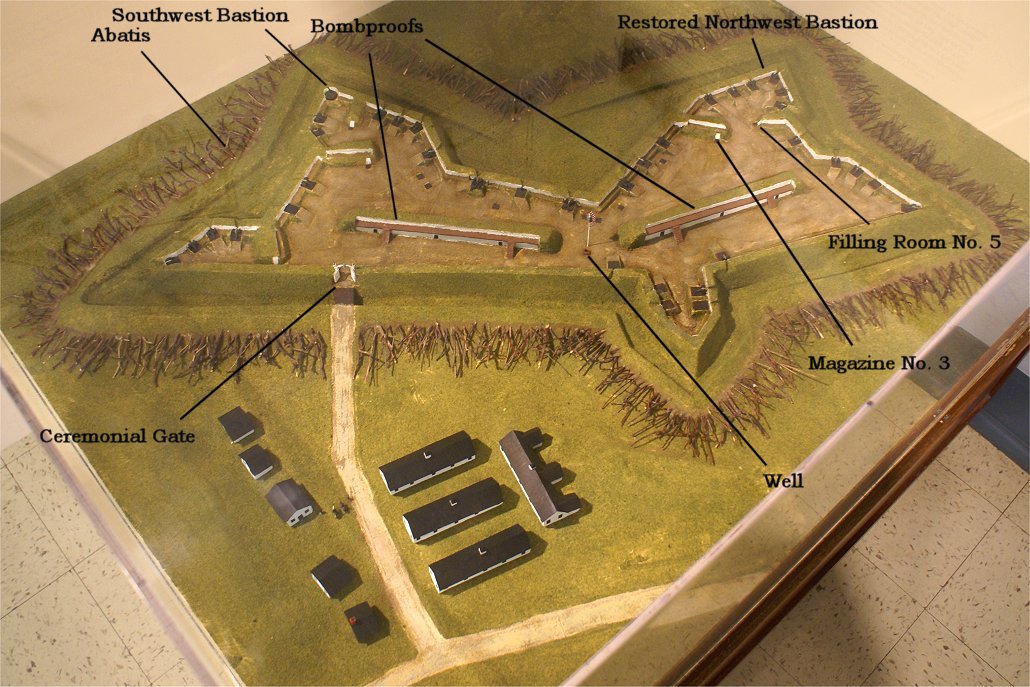
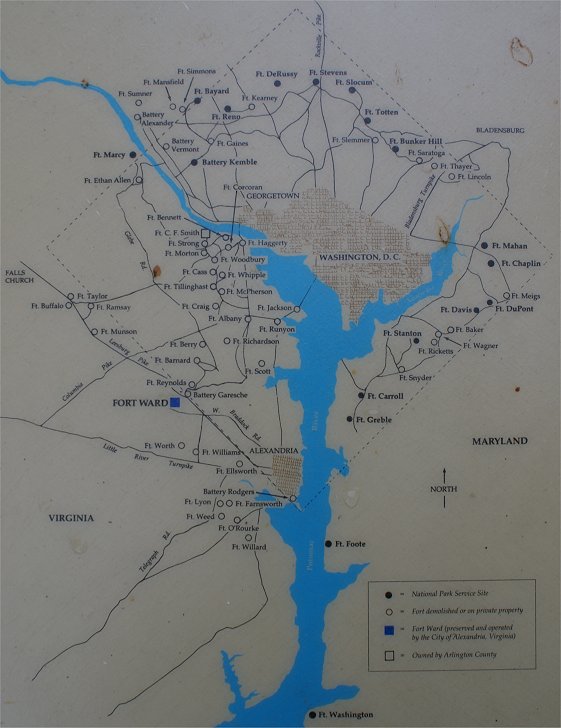
Twelve to 14 foot thick earthen walls that rose 20 feet from the ditch
to the parapet were fronted by a hedge and abatis, or felled trees.
Each of the five bastions covered the face of at least one other.
Inside, bombproofs, powder magazines, and filling rooms gave
overhead protection from mortars and were also used as firesteps for
infantry to use if the enemy suceeded in scaling the walls.
Between 300 and 400 men typically defended the fort, but as many
as 1,200 could occupy the fort in an emergency. During Jubal
Early's raid in the summer of 1864, large centrally located formations
of Union infantry would march to threatened portions of the defenses.
If sufficient troops were available, it would be very difficult
for the Confederates to capture Washington, DC.

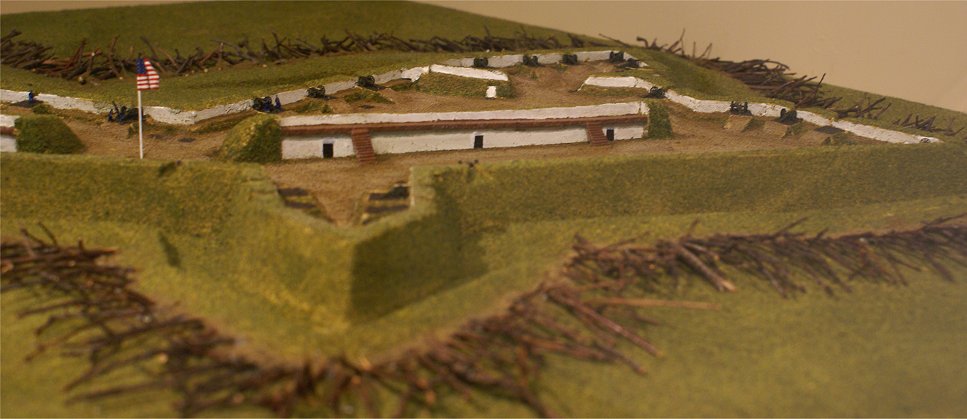
These views are from the rear of the fort. Fort HQ, officers'
quarters, and barracks were to the rear of the fort. The
bombproofs could shelter men during bombardment.
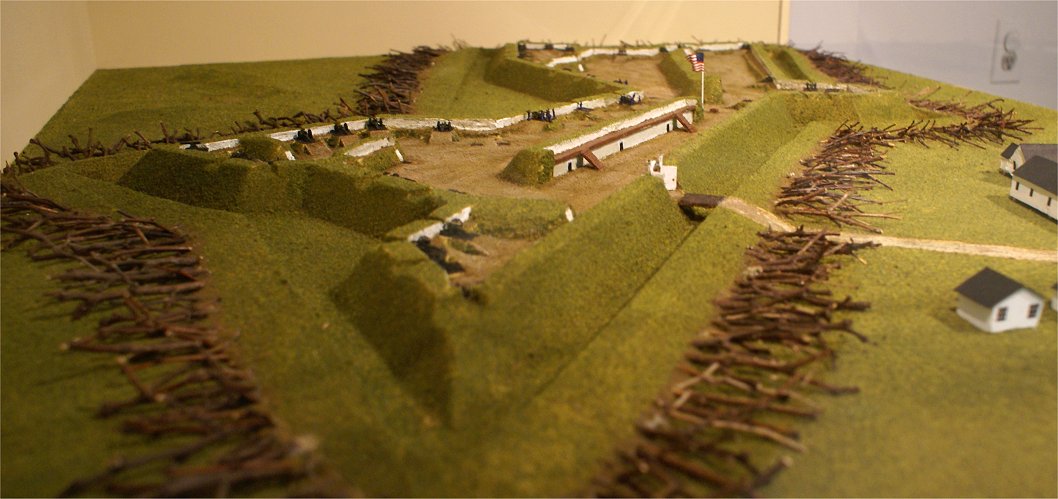

View from outside the restored Northwest Bastion. In addition to
the hedge, abatis, or felled trees, would have been to the right of the
picture, to hinder assaulting infantry.

360 degree view.

Northwest Bastion. Magazines and filling rooms stored rounds and
gunpowder for the guns. Whitewash helped protect the wood and
aided night vision.

The near cannon on the flank of the Northwest Bastion covers the face
of the Southeast Bastion, obscured by the trees. The Northwest
Bastion was intended to hold three 4 1/2 in Rodmans, two 24
pounders, and a 6 pounder James rifle.

This is the view from atop the fort's rear curtain wall.
Distortion in this 360 degree panorama has curved the
straight earthen wall. The bastion at right contained guns which
could fire along the length of the ditch, covering the bastions at
either end of the wall.
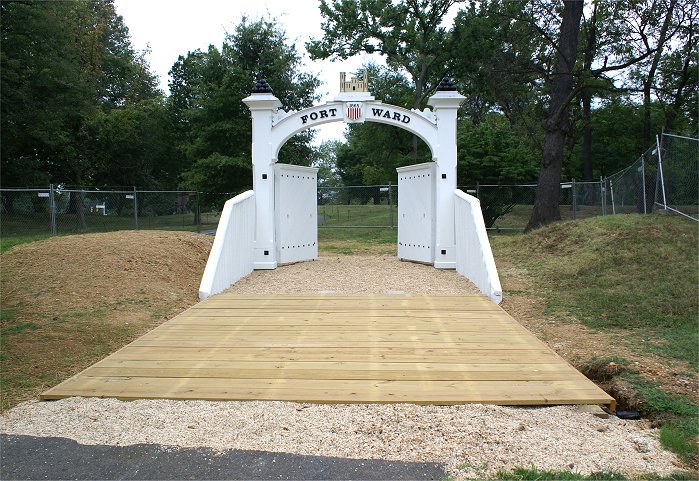
The decorative entrance gate at the rear of the fort was completed only in May 1865, after Lee's surrender.










